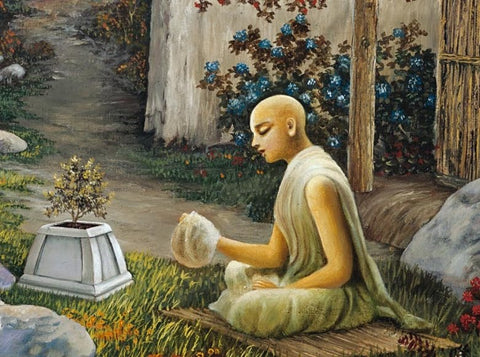
Meditation is a spiritual practice found in practically all religious and spiritual traditions, although the methods differ.
Traditional yogic systems employ complex meditation techniques, often working with different postures to align our external and subtle selves and focus our minds towards self-realization. To quiet the mind and provide a point of focus, yogis are advised to concentrate on mantras including Sanskrit syllables and the names of God.
The Bhakti tradition especially in Vaishnavism (commonly understood as “The Hare Krishna” path) recommends the chanting of the names of God to be a particularly effective method of spiritual awakening, simultaneously opening us to an incredibly empowering experience.

In this system, meditation has three distinct forms: Japa, Kirtan and Sankirtan. In Japa, the meditator individually and softly recites God’s name with the use of beads, similar to a rosary. Kirtan is a public meditation, in which one loudly sings the names of God accompanied by musical instruments and when performed in a group this is called Sankirtan.
This entire process is centred around the recitation of the names of the Supreme. After all the ultimate aim of Yoga is the union with the Divine. The prayer or mantra that Krishna (Lord's name) devotees repeat is called the MahaMantra, or the “great mantra for deliverance.” It is made up of three words Hare, Krishna and Rama. Hare refers to God’s energy. Krishna and Rama refer to God as the all-attractive and all-powerful one who is the source of all pleasure. Repetition of this mantra awakens the soul and brings strength, peace and happiness. It ultimately connects us with Lord Krishna and reveals our original spiritual life of eternal bliss and knowledge. Bhakti Yoga is the highest form of Yoga. Bhakti is both a means and an end in itself.

